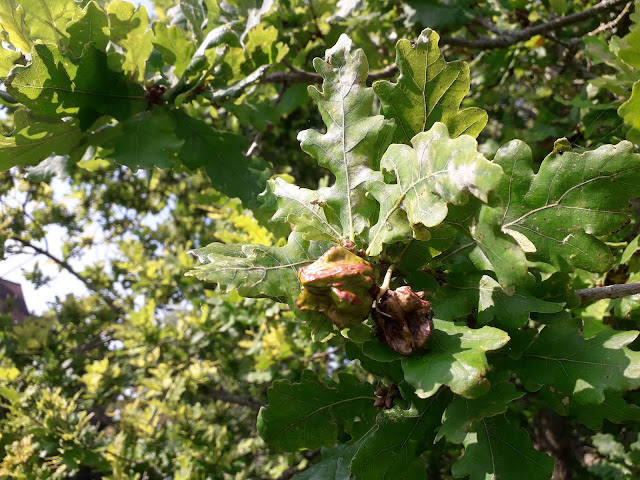The two in my bucket were females. You can tell from the pincers at the end of their bodies. The females' pincers are straighter than the curved pincers of the males as you can see below in this image from the Guardian website. Male and female have a pleasant conjugal life underground during the winter but in spring the male leaves or is chucked out by the female.
News about seasonal changes at Filnore Woods and how to get involved as a volunteer, if you want to. As well as things seen and done at FILNORE WOODS, THE BLOG WILL INCLUDE THINGS YOU CAN SEE IN YOUR STREET OR GARDEN. To get regular updates, you used to be able to enter your email address in "FOLLOW BY EMAIL" (just below on the right) But this seems to have stopped working so GOOGLE 'FILNORE WOODS BLOG' AND FOLLOW 'FILNORE WOODS' ON FACEBOOK
Thursday, 30 September 2021
EARWIG-O, EARWIG-O, EARWIG-O
The two in my bucket were females. You can tell from the pincers at the end of their bodies. The females' pincers are straighter than the curved pincers of the males as you can see below in this image from the Guardian website. Male and female have a pleasant conjugal life underground during the winter but in spring the male leaves or is chucked out by the female.
Monday, 27 September 2021
ROBIN'S PIN CUSHION
Saturday, 25 September 2021
Still flowering
Thursday, 23 September 2021
AUTUMN FLUFF
The long, pink seedpods split open and reveal the seed-bearing fluff within. It can be really annoying the way it lands on the blackberries you want to pick.
Wednesday, 22 September 2021
DADDY-LONG-LEGS
Two creatures are typically called daddy longlegs. One is a spider and the other is this Cranefly, Tipula oleracea.
I found this one on the kitchen floor where it obligingly sat still, but on the previous day when I was blackberrying they were flying out of the grass in their hundreds. This is the time of year when they emerge for a brief adult life after chomping away on plant roots all summer as grubs called leather jackets.
Tuesday, 21 September 2021
MOTH-ERHOOD

Monday, 20 September 2021
Path clearing

Sunday, 19 September 2021
BERRY NICE
Saturday, 18 September 2021
GUELDER ROSE
CAUTION: the uncooked berries can cause vomiting and diarrhoea if eaten so don't be tempted by their resemblance to red currants.
Thursday, 16 September 2021
OAK POWDERY MILDEW
- it stops sunlight getting to the leaves so that the plant can't photosynthesise so well - the leaves cannot feed the rest of the shoot and the tree as a whole
- the fungus continues to transpire in hot weather when an unaffected leaf would close up its pores to retain moisture
- without viable leaves the whole shoot can die-back
Tuesday, 14 September 2021
KNOPPER GALLS & SPANGLES















































